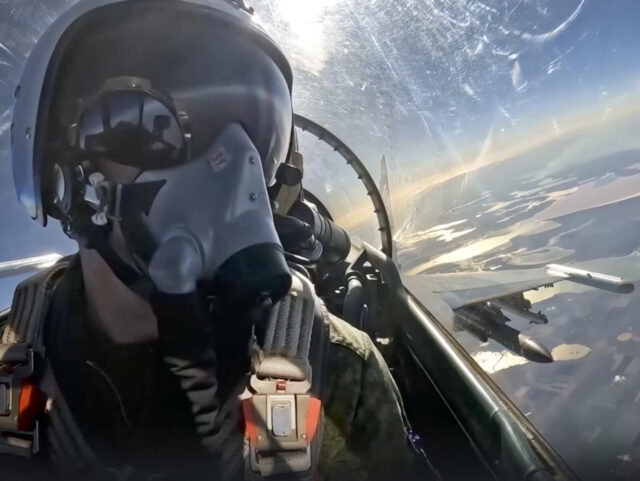Russian forces are striking Ukraine with Cold War-era nuclear missiles – with the nuclear warheads removed, crucially – according to British intelligence.
“Russia is likely removing the nuclear warheads from aging nuclear cruise missiles and firing the unarmed munitions at Ukraine,” the Ministry of Defence (MoD) claimed in its Saturday update on the course of the Russo-Ukrainian war, citing “[o]pen source imagery show[ing] wreckage of an apparently shot-down AS-15 KENT air launched cruise missile (ALCM), designed in the 1980s exclusively as a nuclear delivery system. ”
AS-15 “Kent” is the NATO reporting name for what Russia refers to as the Kh-55, with the MoD suggesting that even without its nuclear payload “an inert system will still produce some damage through the missile’s kinetic energy and any unspent fuel” — although they added that it “unlikely to achieve reliable effects against intended targets” in this disarmed state.
“Russia almost certainly hopes such missiles will function as decoys and divert Ukrainian air defences,” the British suggested — an errant Ukrainian air defence missile is believed to have struck Poland in recent weeks, killing two civilians in the NATO country — but that “[w]hatever Russia’s intent, this improvisation highlights the level of depletion in Russia’s stock of long-range missiles.”
The narrative that Russia is running out of missiles has been peddled for months, however, with the Ministry of Defence stating in mid-October that “Russia’s defence industry is probably incapable of producing advanced munitions at the rate they are being expended” and that a major bombardment of Ukraine around that time represented a “further degradation of Russia’s long-range missile stocks… likely to constrain their ability to strike the volume of targets they desire in future.”
Nevertheless, Russian forces went on the carry out their largest missile bombardment of Ukraine to date a month later, further devastating the nation’s power grid and, according to Kyiv (Kiev) mayor Vitali Klitschko, leaving many Ukrainians “without electricity, without heating, without water” and “freezing” as winter begins to take hold.
The New York Times, citing analysis by Janes, suggested a number of possible reasons Russia has been able to increase the scale of such strikes at a time when Western and Ukrainian officials believed they should have been running out of weapons, speculating that more missiles “are likely being produced as we speak, since the [Russian] economy is on a near war footing and many plants associated with the Russian military industrial complex are working in three shifts and even on weekends” and that key components such as microchips could have been stockpiled prior to the invasion, for example.

COMMENTS
Please let us know if you're having issues with commenting.